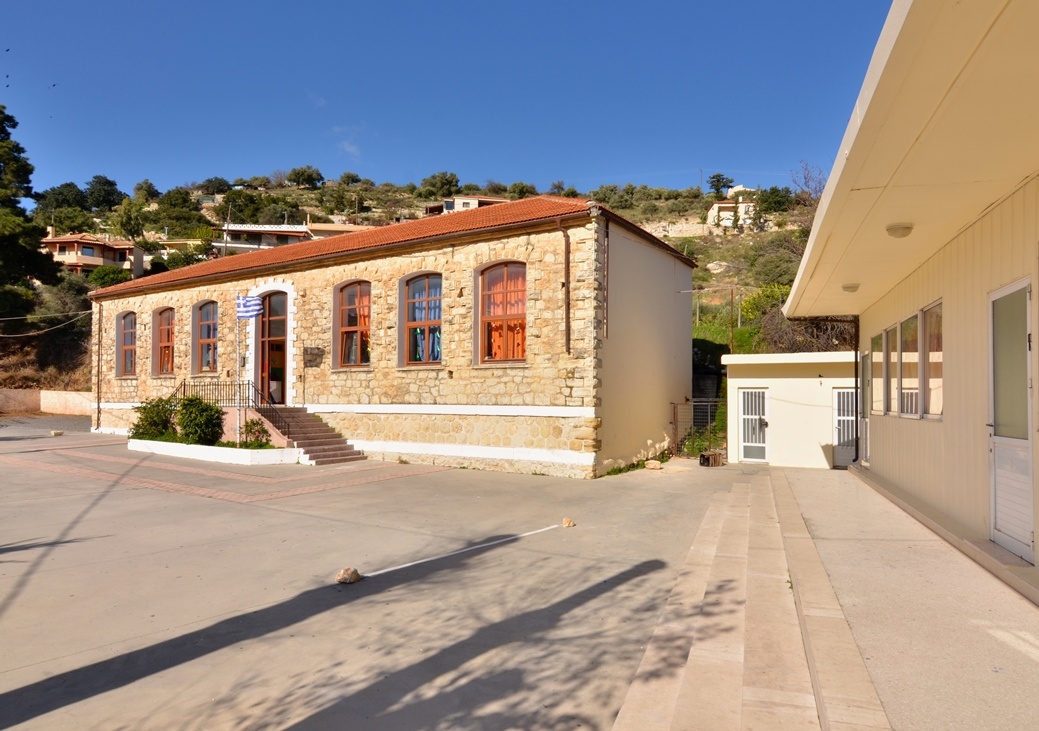
Houdetsi is a large village, renowned for its table grapes. It is built at the foot of Spiliotissa Gorge, to the southwest, a fact that justifies the rich vegetation and picturesque landscape created by the impressive rocks of the gorge cliffs.
Houdetsi has a long musical tradition, with renowned rhyme improvisers and noteworthy instrument makers. This musical tradition bears the stamp of musician Ross Daly who cooperated with the Municipality to create the ‘Labyrinth’ Musical Workshop, a lively hub of musical tradition and culture. ‘Labyrinth’ has made the village a reference point by organising events and seminars on modal musical instruments, attended by students from around the world. In the old mansion where ‘Labyrinth’ is housed there is an operating museum with more than 200 modal instruments of traditional music from Crete, the eastern Mediterranean, India, the Caucasus region, the Middle East and Central Asia, which represent the musical traditions of centuries, and await visitors to tell their story and acquaint them with their culture.
Houdetsi Festival is organised annually at the village jointly organised by ‘Labyrinth’ and the local community, presenting a wealth of musical events, fine art activities and traditional produce exhibitions.
Worth seeing
- The village fountain is of noteworthy archaeological interest. It dates back to 1671; it is named Hatzine, which means ‘water tank’ in Turkish. This fountain was the ‘heart’ of the village and there used to be basins and laundry washing spots around it, which were demolished in the 1980s.
- At Flambouriaris location18 a small, clay-head of goddess Athena wearing an Archaic (650-500 B.C.) helmet has been found. On the same spot there are ruins of the installations and pipes of an aqueduct from the Hellenistic era. In 1992 a vaulted tomb dating to the 13th century B.C. was discovered in the yard of the old Primary school.
- At the centre of the village there is a building owned by the heirs of Androulakis, which is considered to be a Venetian mansion; despite later intervention, the building maintains its morphological and stylistic features. On its east side a coat of arms has been preserved, while a second one is embedded in a later adjacent building, which probably belongs to the same property.
- The oldest church in Houdetsi is Agios Nikolaos (St. Nicholas), which was built before 1300, was then destroyed by the Ottomans and rebuilt in the 19th century. The murals decorating the church were covered with plaster. Parts of the decoration have been revealed. It is located at the entrance of the village, just before the old stone primary school, which was built in 1907 and it is a noteworthy special function building, significant in the history of the architecture of school buildings on Crete in the early 20th century. Other churches are Agia Paraskevi (St. Paraskevi), Agios Antonios (St. Anthony), Timios Stavros (Holy Cross), Agios Panteleimon (St. Panteleimon, Agios Paisios (St. Paisios), Michail Archangelos (Archangel Michael), Panagia Zoodochos Pigi (Madonna, the Life-giving Spring} .
- Walk along the lush green Spiliotissa Gorge to find, almost at the very end (near Agios Vasileios) the Panagia tis Spiliotissas (Madonna of the Cave) Sinai convent. (Visits can be arranged, Tel: 2810-741370)
- The village festivals are organised on September 25 and 26 (Ai-Giannis Festival) and 15 August on (Panagia Church).



 Houdetsi
Houdetsi